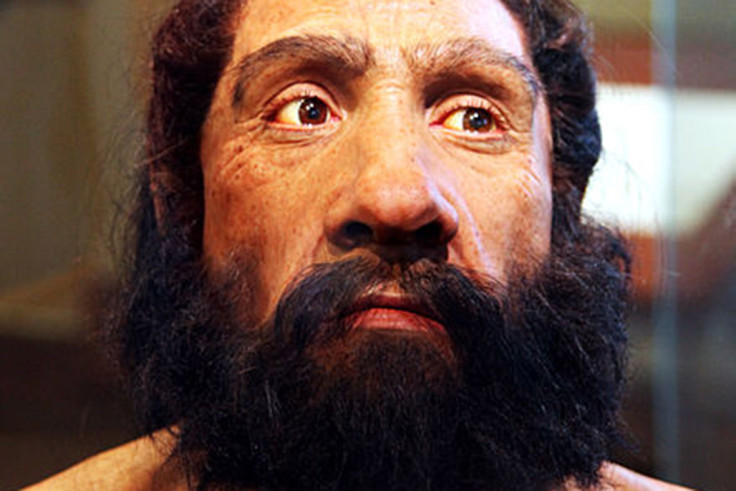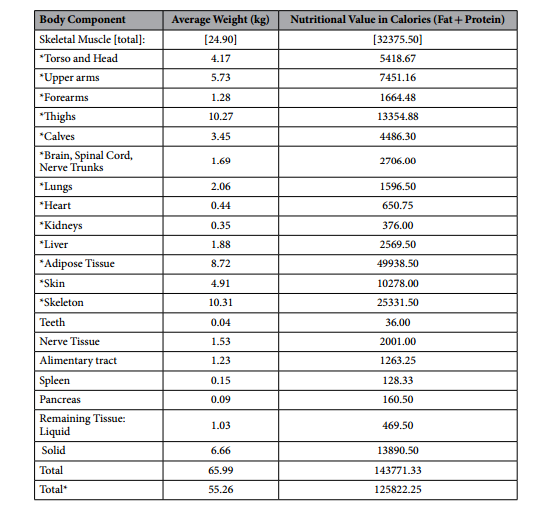Is human flesh calorific? Cannibal Neanderthals didn't just eat each other for nutrition
For the first time, a scientist presents a full nutritional template for the calorific value of the human body.

Prehistoric man may not have engaged in cannibalism purely for nutritional purposes, an archaeologist has said. In his research, he shows that humans derive lower calories from eating each other than from consuming the animals that they commonly hunted, such as bison or horses.
Scientists have long had a kind of morbid fascination for human cannibalism. However, the reason behind these acts is often the subject of intense debate.
In modern humans (Homo sapiens), some examples of cannibalism have been well documented, and researchers have been able to identify a range of motivations for the practice – including psychotic behaviours, ritualistic or nutritional purposes or cannibalism in the context of warfare.
However, why non-modern humans such as Neanderthals or Homo erectus engaged in cannibalism is less clear. Scientists have usually depicted these acts either as nutritional or ritualistic in nature – with most studies favouring the former hypothesis.
The new study, published in Scientific Reports, suggests that the reality may be more nuanced. Non-modern humans may have had a more complex set of motivations for eating members of their own species.
"Many carcasses found at sites of Palaeolithic cannibalism have been butchered, pointing to the nutritional function of cannibalism, as these are not the kind of marks you would expect from a ritual", study author James Cole (University of Brighton) told IBTimes UK.
"From then on, the idea that these were episodes of nutritional cannibalism kind of stuck, but I began to question it – how nutritional are we really as humans, in comparison with other faunal remains that we know were regularly exploited by these ancient humans?"
Calories from body parts
For the first time, the study presents a full nutritional template for the calorific value of the human body, in comparison with the body of animals. This new tool allows scientists to observe how humans compare at a calorie level with other animal species, and thus to determine if cannibalism would have been advantageous from a nutritional point of view.
Before this paper, only one other study published in 1970 had addressed this issue, showing that 50kg male would yield 30kg of edible muscle mass, which in turn would yield around 4.5 kg of protein or 18,000 calories. However, it's not clear how the authors reached this conclusion.
Here, Cole constructed his human nutritional template by using published chemical composition analyses of four male individuals to come up with the total average weights and calorie values (fat and protein) for each body part (see chart below).

One of the limits of this approach is that the data relates to modern humans and it's unknown whether these values would vary for non-Homo sapiens species like Neanderthals.
"We don't have enough information to reconstruct Neanderthals or Homo erectus, but we can take the modern values as minimum proxy values. Neanderthals are known to be much more robust with more muscle mass than we have, so they are likely to rise in calorie value, but it's unlikely that there would be massive differences with modern humans", Cole said.
The researcher then compared the calorific values of humans with those calculated for animal species whose remains have been identified at sites of Palaeolithic cannibalism.
Horses and mammoths on the menu
Cole found that eating humans holds a similar calorific value or less than eating many large animals – whether mammoth, rhinoceros, bison, cow, bear, horse, or deer.
"We fit where we should for an animal of our size and body weight, but we actually don't compare very favourably when you look at the amount of calories you can extract from us in relation to these other animals", Cole said.
Scientists are not sure whether the cannibalism events recovered in the archaeological record were single episodes of consumption or multiple episodes that accumulated over time. Similarly, they don't know if people were eaten after a 'natural' death or if they were hunted to be consumed.
However, Cole notes that hunting a member of our species would have been much harder than killing an animal with a lesser degree of intelligence. Since it is also less rewarding in terms of the calories obtained, it is very unlikely that ancient humans would have hunted each other for nutritional purposes.
These findings suggest that it might not have been very interesting for non-modern humans to engage in cannibalism just to feed, especially when better options were available.

Thus, we may have to rethink the way we see Palaeolithic episodes of cannibalism. Like cannibalism in modern humans, acts of cannibalism by Neanderthals or Homo erectus cannot be simply categorised as "nutritional" acts.
We may never be entirely sure about why they engaged in these practices, but looking beyond these simple explanations may be useful to understand non-modern humans.
"In the last few years, there have been amazing new findings about Neanderthals. We know they made their own jewellery, and to do that they must have been symbolically aware and to have a form of language. There is more and more evidence that these hominins were as complex as we are, even if it was in different ways. It's thus possible that they also had complex attitudes towards a behaviour like cannibalism. That's the point of this paper, to make us think more broadly about why they might have consumed each other", Cole concluded.
© Copyright IBTimes 2025. All rights reserved.






















